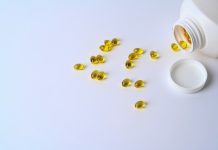
Chocolate’s delightful taste and aroma come from chemistry.
A mix of molecules creates its delicious flavor, but some of these molecules might be harmful in large amounts, especially in other sweet treats.
According to a study in the Journal of Agricultural and Food Chemistry, while these compounds are usually safe in chocolate, higher levels in baked goods could pose health risks.
When making chocolate, cocoa beans are roasted, bringing out their rich flavors. This process creates new molecules, like α,β-unsaturated carbonyls.
These carbonyls are highly reactive and can damage DNA if consumed in large amounts.
Though naturally present in many foods, some carbonyls are also used as flavoring additives and have been banned in the European Union due to their potential risks.
To understand how these molecules form in foods and their safety levels, Alexandre Dusart and his team tested chocolates and various sweet treats for 10 different α,β-unsaturated carbonyls.
Some of these have been deemed safe by the European Food Safety Authority, while others are still under review.
The researchers made their own chocolates and found that these harmful carbonyls formed during roasting and after adding cocoa butter. However, the levels were too low to cause health concerns from eating the chocolate.
Next, they examined 22 commercially available desserts, such as crepes, waffles, cakes, and biscuits, with and without chocolate.
Surprisingly, they found even lower levels of nine out of the 10 carbonyls compared to their homemade chocolates.
However, one carbonyl—genotoxic furan-2(5H)-one—was found in much higher concentrations in crepes and cakes, reaching up to 4.3 milligrams per kilogram.
This is concerning because the recommended safe limit for genotoxic substances is only 0.15 micrograms per person per day. Eating these desserts could easily exceed this limit, although more research is needed to determine the exact health risks.
The study concluded that furan-2(5H)-one likely forms during baking and isn’t related to the amount of chocolate in the desserts. This research highlights the need to monitor flavoring compounds in food to keep consumers safe.
Understanding where these potentially harmful molecules come from in chocolate and other desserts helps us make informed choices about what we eat. While chocolate itself remains safe, it’s important to be aware of the risks in other sweet treats, especially those with high levels of certain flavoring compounds.



